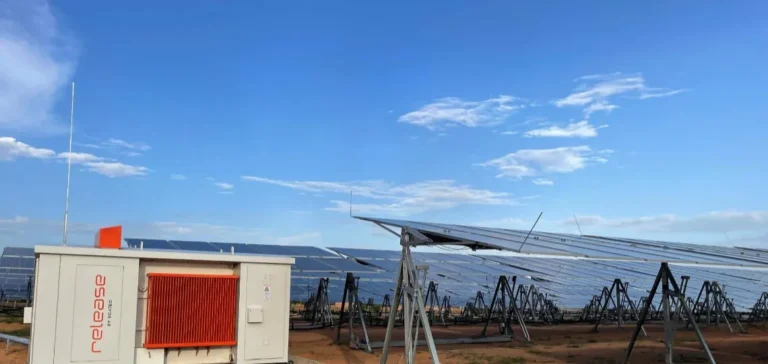Release by Scatec, a subsidiary of the Norwegian energy group Scatec, has begun the expansion works of its hybrid solar power plants in northern Cameroon. This initiative, carried out on the sites of Maroua and Guider, marks the second phase of a programme launched in 2022. The newly installed capacities will bring the entire project to 64.4 MW of solar and 38.2 MWh of battery storage.
A modular and pre-financed infrastructure
The initial solar modules, 18 MWp in Maroua and 17.8 MWp in Guider, are coupled with 9.5 MWh of storage capacity each. This approach, based on modular infrastructure and a pre-financing model, enabled the initial facilities to be connected to the grid in less than six months. The rapid deployment of the first phases validated Release’s economic and operational model, which is based on a partnership with Électricité du Cameroun (ENEO).
The expected annual output after the extension is 141.5 GWh, equivalent to the consumption of 200,000 households. The project also aims to reduce the country’s dependence on imported fossil fuels. Data shared by Release indicates annual savings of XAF18bn ($29mn) due to reduced fuel consumption between 2021 and 2023.
A dynamic complement to hydroelectric power
Cameroon’s energy mix is dominated by hydroelectric power, which accounted for approximately 814 MW out of a total installed capacity of 877 MW in 2024, according to the International Renewable Energy Agency (IRENA). Solar remains marginal at 63 MW. In this context, the projects led by Release demonstrate the possibility of rapidly integrating new energy sources without disrupting the existing balance.
According to the figures provided, the hybrid plants have enabled an annual reduction of 32,000 tonnes of carbon dioxide (CO2), while improving the stability of the northern Cameroonian grid. The facilities, operational for two years, have proven effective both in operational terms and in terms of supply.
Public-private partnership in action
The contractual model between Release by Scatec and ENEO is based on a public-private partnership aimed at accelerating the deployment of stable electricity capacity. This type of structure attracts financing and shortens implementation times for large-scale projects.
Release’s strategy is based on standardised production units and early-stage contracting, offering a response tailored to the need for additional capacity. The installations in Maroua and Guider could serve as a development base for other regions of the country facing recurring supply deficits.






















